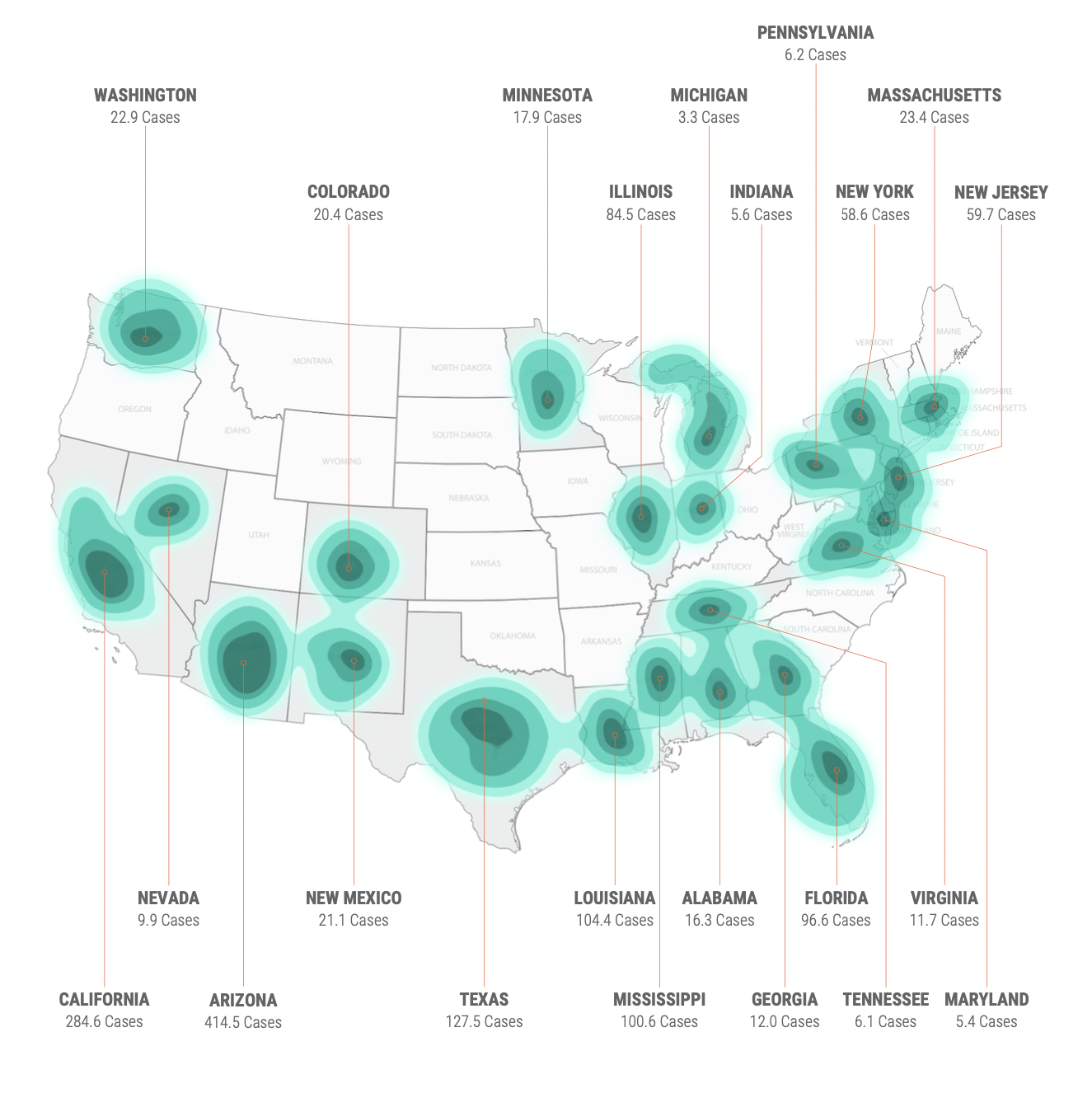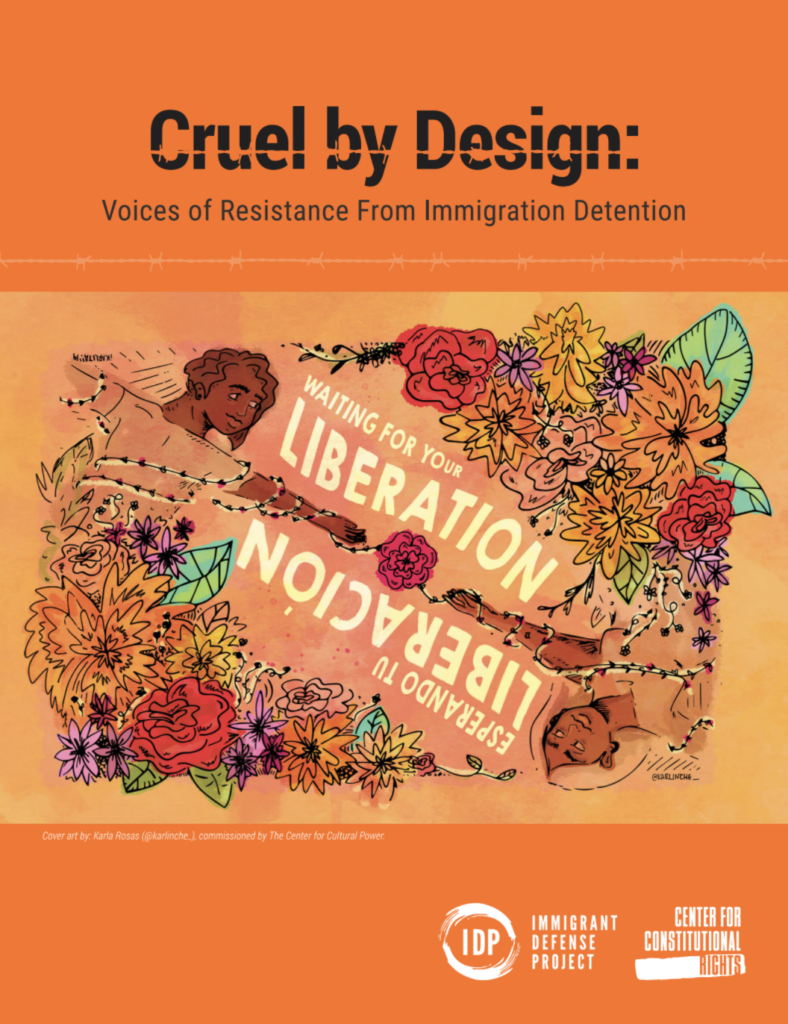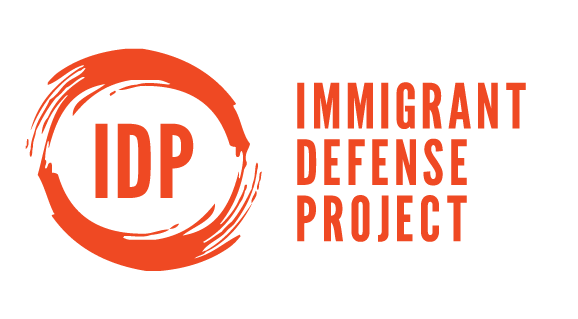Cruel by Design: Voices of Resistance from Immigration Detention, a report by the Immigrant Defense Project and the Center for Constitutional Rights, shows how the harms associated with ICE detention practices are embedded in the structures of the immigration control regime rather than a manifestation of a broken system. In doing so, it offers a summary of U.S. detention laws to illustrate how the system is designed to make it as easy as possible for the federal government to exclude and deport people. It also shows how the detention system deploys multiple tactics to undermine the ability of individuals to fight deportation. In addition, the report highlights the stories of people who’ve been held in ICE detention, and their resistance and resilience in the face of a draconian system.
Piecemeal reforms alone will not be sufficient for remedying the cruelty of this system. What is ultimately required is far-reaching transformation, one aimed at ending detention as a tool of the U.S. regime of exclusion.
From the Introduction:
“Well, you’re going to have to die of something.”
These are the words spoken by a guard to immigrants held at Hudson County Correctional Facility as the COVID-19 pandemic started to race through detention facilities throughout the country in March, 2020. They were on a hunger strike so they could obtain soap and toilet paper.
That those detained felt compelled to take such drastic action in the midst of a pandemic speaks to how the practices of U.S. Immigration and Customs Enforcement (ICE) helped to spread the coronavirus. Longstanding abusive conditions in ICE facilities—overcrowding, lack of medical care, and unsanitary conditions—exacerbated the pandemic in the facilities themselves and in the surrounding communities. And by continuing to detain people, subjecting them to unsafe conditions, transferring people from state to state, and deporting individuals with COVID-19 to countries such as India, Haiti, Guatemala, and El Salvador, ICE also exported the virus globally.

ICE practices during the pandemic shine a spotlight on the violence of an ICE practices during the pandemic shine a spotlight on the violence of an immigration detention system that periodically enters the collective conscious. ICE’s horrific detention practices before and during the pandemic have included family separation; sexual abuse of children; unnecessary hysterectomies; use of force; deployment of chemical agents such as pepper spray; arbitrary and punitive use of solitary confinement; prolonged detention; and medical neglect, occasionally resulting in death.1 These are just some of the more extreme manifestations of an immigration detention system that subjects tens of thousands of people to unnecessary cruelty every day.
By drawing from firsthand accounts of ICE detention conditions, this report focuses on the urgent need for not only release from imprisonment but an end to a cruel system. While there are many accounts of the harms of the immigration detention system, most of them fall short by not challenging detention as part of a strategy of deterrence, one that aims to discourage migration and to limit people’s ability and will to fight deportation.
This report shows how the harms associated with ICE detention practices are embedded in the structures of the immigration control regime rather than a manifestation of a broken system. In doing so, it offers a summary of U.S. detention laws to illustrate how the system is designed to make it as easy as possible for the federal government to exclude and deport people. It also shows how the detention system deploys multiple tactics to undermine the ability of individuals to fight deportation. In addition, the report highlights the stories of people who’ve been held in ICE detention, and their resistance and resilience in the face of a draconian system.
Piecemeal reforms alone will not be sufficient for remedying the cruelty of this system. What is ultimately required is far-reaching transformation, one aimed at ending detention as a tool of the U.S. regime of exclusion.
Preferred citation: Mizue Aizeki, Ghita Schwarz, Jane Shim, and Samah Sisay. “Cruel by Design: Voices of Resistance from Immigration Detention.” Immigrant Defense Project and Center for Constitutional Rights, February 2022.
© February 2022, Immigrant Defense Project and Center for Constitutional Rights




